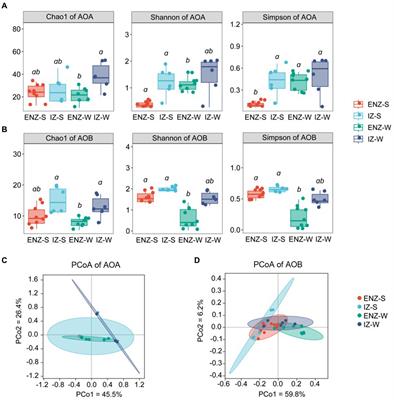Ammonia-oxidizing archaea adapted better to the dark, alkaline oligotrophic karst cave than their bacterial counterparts
Subsurface karst caves provide unique opportunities to study the deep biosphere, shedding light on microbial contribution to elemental cycling.

Although ammonia oxidation driven by both ammonia-oxidizing bacteria (AOB) and ammonia-oxidizing archaea (AOA) is well explored in soil and marine environments, our understanding in the subsurface biosphere still remained limited to date. To address this gap, weathered rock and sediment samples were collected from the Xincuntun Cave in Guilin City, an alkaline karst cave, and subjected to high-throughput sequencing and quantification of bacterial and archaeal amoA, along with determination of the potential nitrification rates (PNR). Results revealed that AOA dominated in ammonia oxidation, contributing 48–100% to the PNR, and AOA amoA gene copies outnumbered AOB by 2 to 6 orders. Nitrososphaera dominated in AOA communities, while Nitrosopira dominated AOB communities. AOA demonstrated significantly larger niche breadth than AOB.
The development of AOA communities was influenced by deterministic processes (50.71%), while AOB communities were predominantly influenced by stochastic processes. TOC, NH4+, and Cl− played crucial roles in shaping the compositions of ammonia oxidizers at the OTU level. Cross-domain co-occurrence networks highlighted the dominance of AOA nodes in the networks and positive associations between AOA and AOB, especially in the inner zone, suggesting collaborative effort to thrive in extreme environments.
Their high gene copies, dominance in the interaction with ammonia oxidizing bacteria, expansive niche breadth and substantial contribution to PNR collectively confirmed that AOA better adapted to alkaline, oligotrophic karst caves environments, and thus play a fundamental role in nitrogen cycling in subsurface biosphere.
Read the full article at the original website
References:
